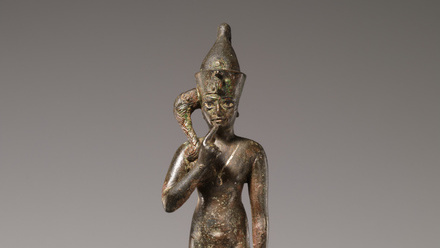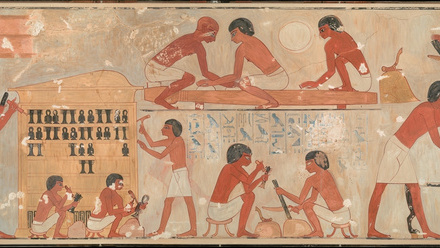Bronze gods
by Dr Sanda Heinz (Dartmouth College) and Dr Elsbeth van der Wilt (Free University of Berlin)
During the 1960s and 70s the Egypt Exploration Society excavated a vast area of temples and subterranean catacombs known today as the Sacred Animal Necropolis of North Saqqara (archive reference: SAQ-SAN). Over the course of these excavations numerous bronze figures were discovered, deposited in ancient times as votives to the gods of the necropolis. Some of these were uncovered in secure caches, grouped together and symbolically placed into burials of their own. The enormous quantity of artefacts, stelae, burials and monuments found at the site meant that publication took decades and some areas were never fully completed. During 2015 a grant was offered by the Society to Dr Sanda Heinz and Dr Elsbeth van der Wilt in order to finish the publication of these unique caches of bronzes. In this brief update they let us know what they have discovered in the archives so far.
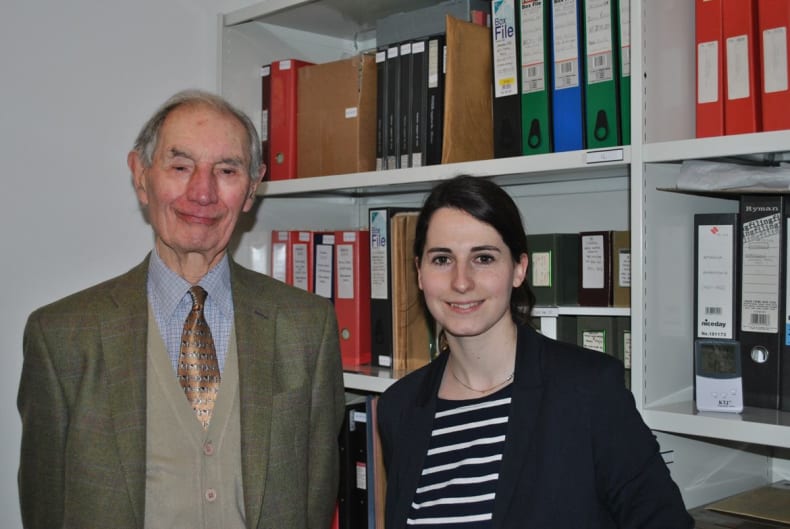 Prof Harry Smith with Maria Rodriguez Rubin (EES archivist 2014) following the rehousing of the SAQ-SAN sub-archive seen behind them here.
Prof Harry Smith with Maria Rodriguez Rubin (EES archivist 2014) following the rehousing of the SAQ-SAN sub-archive seen behind them here.
Harry Smith and Sue Davis returned the archive of excavation records of the North Saqqara Animal Necropolis to the EES in 2014. Using these records, we are now working towards a suitable publication for the wealth of information on the caches and bronze statuettes.
Davies and Smith collected the raw data from daybooks and journals and produced a detailed manuscript summarising the information. Using this manuscript as our foundation, our ultimate goal is to produce a searchable digital archive for the individual objects in the caches as well as a traditional print book with analyses.
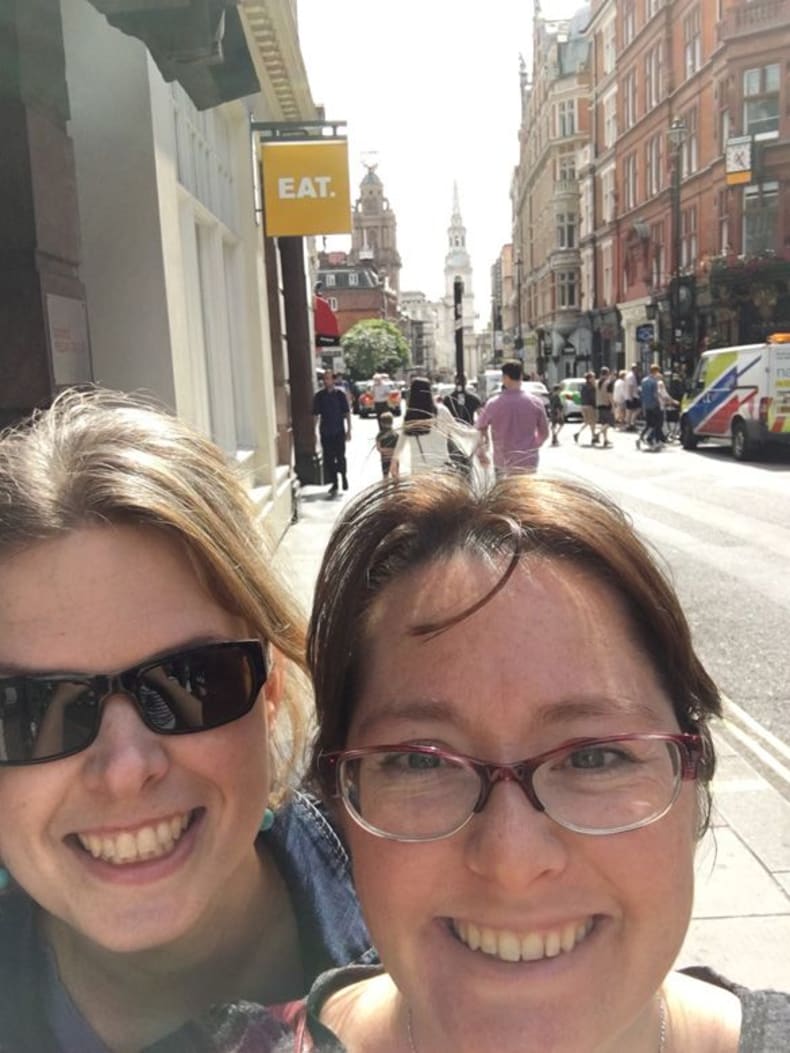 Left: Elsbeth (left) and Sanda (right) during their research visit to London
Left: Elsbeth (left) and Sanda (right) during their research visit to London
We worked together during our DPhils on metal finds from Thonis-Heracleion, a sunken city at the mouth of the Canopic branch of the Nile. There is much comparative material between the sites, which is what inspired us initially to talk with Davies and Smith about the SAQ-SAN archive. The caches are the most significant group of unpublished material and they were keen for us to take over the project because of our past work at Thonis-Heracleion.
Sanda worked briefly in the archive during February 2015 as a fellow at the Metropolitan Museum of Art. In August 2016 we were back for two weeks, generously sponsored by the EES Excavation Fund. Thanks to the care taken by the excavators, the archive itself is extraordinarily well organised and we spent a considerable amount of time each day amazed at the range of material. The photos included some statuettes that were truly remarkable, as well as many statuettes similar to those found at other sites.
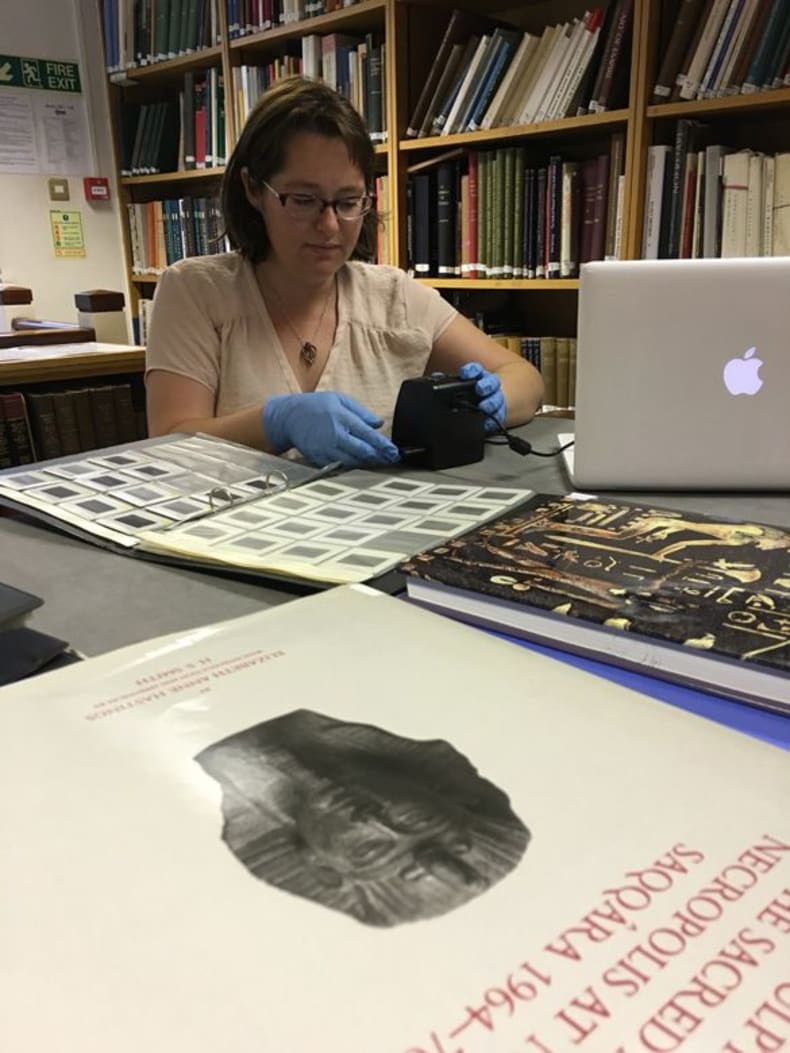 Right: Sanda digitises some of the slides in the SAQ-SAN sub-archive
Right: Sanda digitises some of the slides in the SAQ-SAN sub-archive
As we started on our goal of reconstructing the visual record of the site, we found photos of nearly every object in the caches, as well as photos of caches as they are being excavated. A few of these were unidentified and we hope that with some future detective work we will restore their context. More details about our findings and research plans can be seen in Egyptian Archaeology 49 (coming soon). Beyond our immediate research aims, we also found numerous photos of personal interest, including pictures that revealed the massive scale of excavation, including hundreds of local excavators, a bulldozer surmounting the enclosure wall, and metres of archaeological fill.
Below: Left, recontextualising the find-spots of artefacts using archival images. Right, a bulldozer mounts the enclosure wall of the complex during sand clearance.
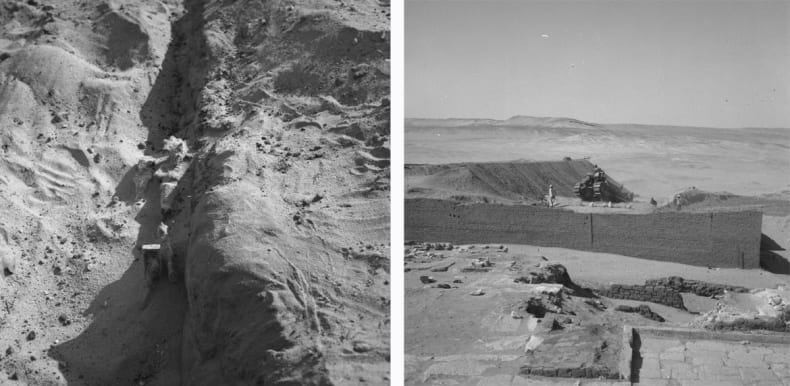
For those of you looking for the obligatory friendly dogs, which frequent many EES excavations, we had our own canine guardian, Anubis (below left). Although in this case, he was outnumbered by many, many cats (below right).
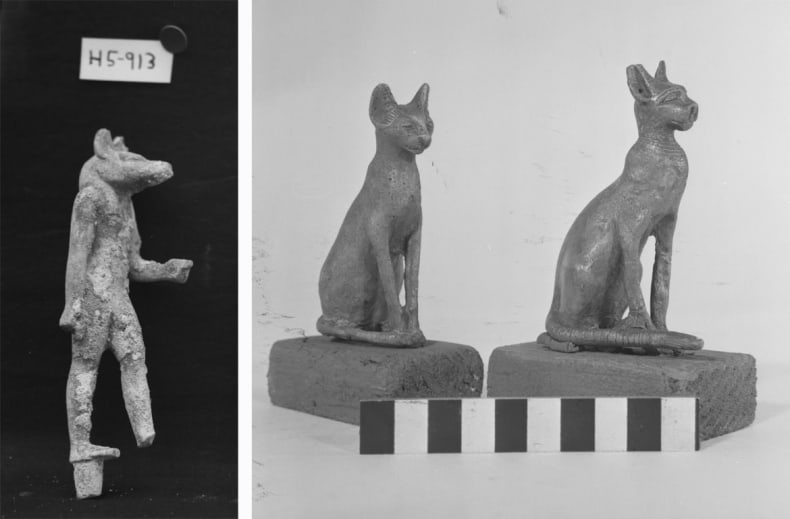
There is so much more to uncover in the archive and we very much look forward to future work with the EES.

